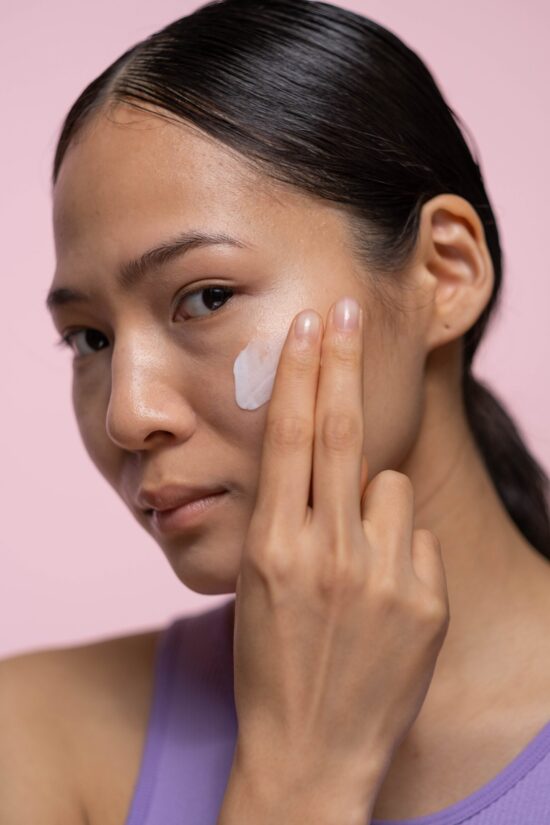
Do you prefer organic solutions when it comes to taking care of your skin? If you do, chances are you’ll come across products that contain cannabidiol or CBD in their ingredient list. CBD is available in various forms and has become more popular as a relaxant, which can help induce sleep and relieve stress.
However, in recent years, different brands have developed CBD-infused products aimed at healthy skin. Also, products like essential oils listed on websites like MotherhoodCommunity.com it can also act as skin care products and help you relax.
Will topical CBD products work for your skin? Here, we find out how this plant-based ingredient can do wonders for your skin’s health.
Benefits of CBD skin care products
CBD is a chemical compound that is the second most common active ingredient in the cannabis sativa plant, followed by tetrahydrocannabinol (THC).
But unlike THC, which is found in high levels in marijuana and gives its users a euphoric “high,” CBD has a therapeutic effect that is not psychoactive or addictive.
Here are the benefits that CBD can bring to each skin type:
CBD’s moisturizing properties can soothe dehydrated or scaly skin, which is usually caused by the cold, low sebum production, or skin conditions such as eczema, atopic dermatitis, and psoriasis.
CBD is also known to interact with receptors in the skin, which studies suggest can calm skin inflammation, such as in acne.
In addition, the compound can regulate sebum production and reduce bacterial infections, which can lead to acne formation.
Research indicates that CBD plays a role in skin homeostasis or the skin’s cell renewal process. CBD’s antioxidants fight free radicals, which studies believe cause premature skin aging by causing skin to wrinkle.
Correct volume and frequency of CBD product application
How much CBD you should use on your skin can depend on the type of product you use, your needs, and how your skin reacts to the product.
Brands usually state the recommended amount of CBD and frequency of application on their packaging.
Check the label of your CBD product for its cannabidiol content. CBD skin creams sold today can range from three to eight milligrams of CBD.
The CBD in your skin oil, cream or lotion can be any of the following:
CBD isolate is pure CBD without other cannabinoids from the hemp plant. The broad spectrum CBD product does not contain THC. The full-spectrum CBD product contains several cannabinoids, including terpenes that come from hemp buds and produce its unique aroma. This type of CBD also contains low levels of THC.
Because the full-spectrum CBD product undergoes less processing, brands recommend it for general skin care because of the “environmental effect” of various cannabinoids.
This phenomenon refers to the higher benefits you can get from a mixture of cannabinoids compared to single-type products.
But for target areas like the face, CBD isolate may be the most effective, as its pure form will prevent pore clogging.
Safety of CBD skin care products
Although CBD is gentle enough to use on a variety of skin types, it is still recommended to consult your dermatologist before using any product.
Research related to the effectiveness of CBD on acne, atopic dermatitis and chronic pruritus is still insufficient and lacks randomized control trials.
Your skin doctor can advise you on how to safely try the product, depending on the quality and current condition of your skin.
If your skin reacts to a CBD-infused product, the irritation is likely due to another ingredient, not the CBD.
Most brands combine CBD with other essential oils. Apply the product to a small area before spreading it liberally on the skin.
Steps to take before trying CBD skin care products
Follow the steps below to ensure you get the best results from your CBD product:
1. Learn more about CBD.
This article is just an introduction to creating greater awareness of CBD. But you can do more research, especially if you have particular skin conditions.
2. Research your favorite product.
No over-the-counter CBD product is officially approved for sale by the US Food and Drug Administration.
Therefore, you will need to learn as much as you can about your supplier, their manufacturing method, and the results of third-party or external laboratory testing, which is shown as a Certificate of Analysis (COA). Remember to also check user opinions.
3. Test a small amount of the product on the skin.
A patch test will help you determine how your skin will react to the product. Apply it somewhere on your forearm and see if there is a reaction within a few hours.
Also, some topical CBD users recommend applying it to the skin on alternate days when first using it.
Be sure to see your doctor if you develop a rash.
Side effects of CBD skin care products
CBD generally does not produce side effects, although one study claims that the compound can induce melanogenesis, or pigmentation, on its own.
CBD topicals sold commercially often combine CBD with other ingredients, which counteract the possibility of causing skin marks.
For example, CBD serums may include vitamin C, which is known to help lighten the skin. This mixture can help reduce age spots and other blemishes.

References:
1. Therapeutic potential of cannabidiol (CBD) for skin health and disorders
2. Cannabidiol (CBD): What we know and what we don’t
3. Assessment of the sensory and moisturizing properties of emulsions with hemp oil
4. Therapeutic potential of cannabidiol (CBD) for health and skin disorders
5. The differential efficacy of selected non-psychotropic phytocannabinoids on human sebocyte functions implicates their introduction in the treatment of dry/seborrheic skin and acne
6. Cannabidiol exerts sebostatic and anti-inflammatory effects on human sebocytes
7. Antimicrobial and antiviral potential (SARS-CoV-2) of cannabinoids and cannabis sativa: a comprehensive review
8. Acne
9. Therapeutic potential of cannabidiol (CBD) for health and skin disorders
10. Beginner’s introduction to skin stem cells and wound healing
11. Cannabis sativa L. Bioactive compounds and their protective role in oxidative stress and inflammation
12. What are reactive oxygen species, free radicals and oxidative stress in skin diseases?
13. Cannabis-based medications and pain: a review of possible synergistic and environmental effects
14. Cannabinoids in dermatology: hope or hype?
15. FDA Warns Companies Illegally Selling Over-the-Counter CBD Pain Relief Products
16. Cannabidiol regulates melanogenesis via the CB1-dependent pathway by activating p38 MAPK and p42/44 MAPK

